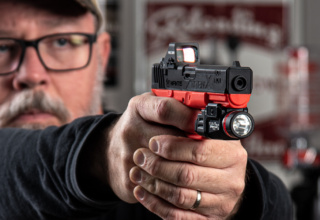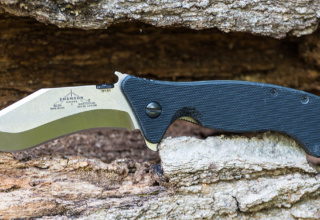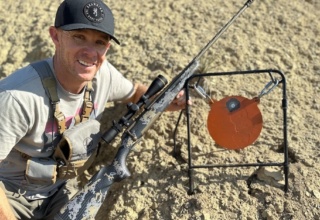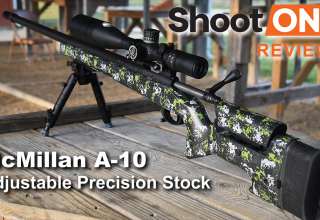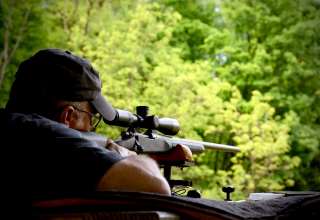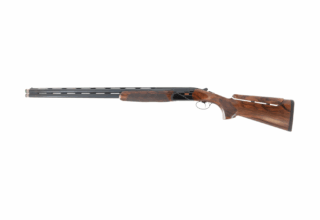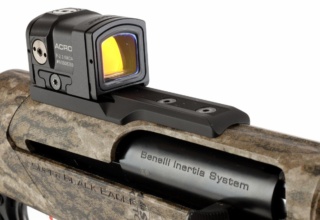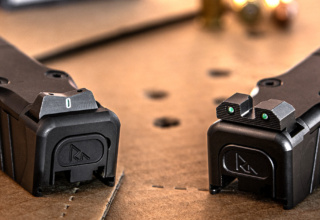Most people purchase their first gun for personal defense or hunting. But as gun owners start spending time on the practice range, they often try shooting a match just for the fun of seeing how well they can shoot compared to others. From that point on, it’s easy to get bitten by the competition bug and start buying a variety of aftermarket parts and specialized ammo. Some even go all the way and purchase a match-quality gun. But whichever path you choose, there are a few basic things to look for when entering the exciting world of competitive shooting.
Step 1: Know Your Sport
Before doing anything else decide what type of competition interests you. Bullseye? Steel Challenge? Silhouettes? Then learn about the rules of the discipline you’ve chosen. That’s because the rules will determine the type of gun and ammunition you can use. They will also determine the kind of modifications you can make to your gun. For example, I shoot a weekly informal Bullseye pistol match at the Flagler Gun Club. Our rules allow any handgun in good condition that can shoot the rapid-fire stage which requires two five shot strings in ten seconds. Other handgun sports like ICORE, IPSC and IDPA have much tighter restrictions and often have different divisions or stages based on caliber, power factor, barrel length, operating system and the degree the handgun has been modified from its factory specifications. My IDPA gun is a .45 cal. 1911 Enhanced Service Pistol.
Step 2: Choose a Discipline and a Gun
 By the time you get to this point, you should have determined the sport in which you want to compete. Let’s say that you want to compete in Bullseye and want to start with a .22 rimfire pistol, but you don’t know which one. Go to a match and see what people are shooting. When I was young the pistols to have were a High Standard, S&W Model 41, Colt Woodsman Match Target or the Browning Challenger or Medalist. Today most shooters use the S&W 41, customized Ruger Mark III or Mark IV pistols or one of the custom guns made by Volquartsen. My first .22 caliber Bullseye gun was a Ruger Mark I with a Bull Barrel. Lately, I’ve gone over to the Ruger Mark III .22/.45 Lite. Once you see one you like, find out if its owner will let you fire a few shots with it. Otherwise go to your local gun store, take a close look at its features, point it in a safe direction and line up the sights. Make sure you can see them clearly as you hold it on target to make sure you can hold it steady.
By the time you get to this point, you should have determined the sport in which you want to compete. Let’s say that you want to compete in Bullseye and want to start with a .22 rimfire pistol, but you don’t know which one. Go to a match and see what people are shooting. When I was young the pistols to have were a High Standard, S&W Model 41, Colt Woodsman Match Target or the Browning Challenger or Medalist. Today most shooters use the S&W 41, customized Ruger Mark III or Mark IV pistols or one of the custom guns made by Volquartsen. My first .22 caliber Bullseye gun was a Ruger Mark I with a Bull Barrel. Lately, I’ve gone over to the Ruger Mark III .22/.45 Lite. Once you see one you like, find out if its owner will let you fire a few shots with it. Otherwise go to your local gun store, take a close look at its features, point it in a safe direction and line up the sights. Make sure you can see them clearly as you hold it on target to make sure you can hold it steady.
Step 3: Customize
Now that you have your gun, you’ll quickly notice that some of the other competitors’ guns may have a variety of aftermarket parts installed on them. In the world of Bullseye these usually involve custom grips, triggers and an optical sight. My current Ruger has Herrett’s Stocks, a Volquartsen trigger and an L3 Insight Technology MRDS red dot sight. Customizing a pistol can get expensive, so only make changes when its necessary. In addition, most of us have access to the internet, which is a great place to research your options as well as to find the best prices.
Step 4: Choose Your Ammo
 This is one of the most important steps in any type of shooting competition. You’ll quickly find that there’s a great difference between different brands of ammo, and that guns can be quite finicky when it comes to choosing a load. If you shoot centerfire matches, you have the option of using factory ammo or developing your own handloads. Given that we’ve been looking at shooting Bullseye with a .22 rimfire, handloads are not an option. With my Ruger .22 I’ve found a broad variation in accuracy, depending on the brand of ammo I’m shooting. In general, my Ruger shoots most accurately when I use ELEY ammunition instead of bargain basement brands. I have yet to have a stoppage when using ELEY and the bullet has always landed where the sights were aimed when the shot broke. Even better, my groups with ELEY action are about half the size they are with other brands.
This is one of the most important steps in any type of shooting competition. You’ll quickly find that there’s a great difference between different brands of ammo, and that guns can be quite finicky when it comes to choosing a load. If you shoot centerfire matches, you have the option of using factory ammo or developing your own handloads. Given that we’ve been looking at shooting Bullseye with a .22 rimfire, handloads are not an option. With my Ruger .22 I’ve found a broad variation in accuracy, depending on the brand of ammo I’m shooting. In general, my Ruger shoots most accurately when I use ELEY ammunition instead of bargain basement brands. I have yet to have a stoppage when using ELEY and the bullet has always landed where the sights were aimed when the shot broke. Even better, my groups with ELEY action are about half the size they are with other brands.
Step 5: Relax and Have Fun
Always remember to leave your ego at the gate and have a good time, regardless of how well or poorly you shoot on any particular day. The goal of competition is not to win, but to improve your skills. Keep that attitude and it’s easy to find that you’ll always have a good day and earn the respect of your fellow competitors; regardless of whether you go home with any prizes.
For more information on all of ELEY’s products please visit https://www.eleyammunition.com/competition
- The Legends Live On - August 8, 2022
- Gearing Up For Competition Shooting - June 12, 2017

